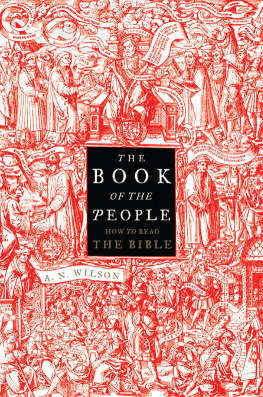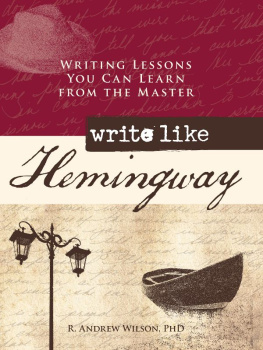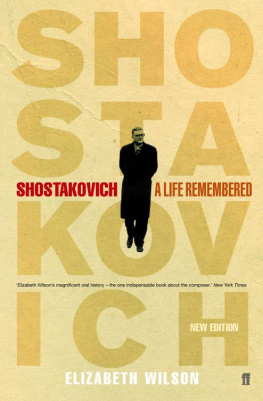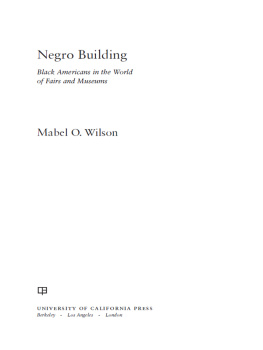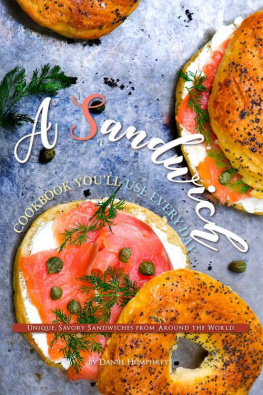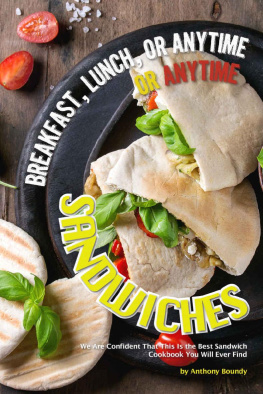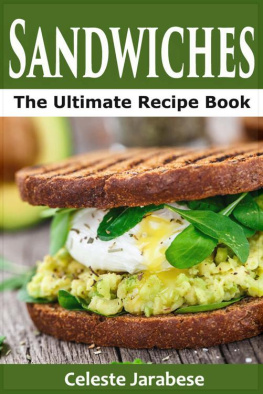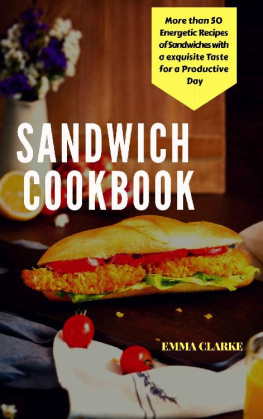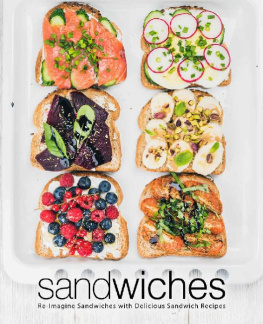SANDWICH

Edible
Series Editor: Andrew F. Smith
EDIBLE is a revolutionary new series of books dedicated to food and
drink that explores the rich history of cuisine. Each book reveals the
global history and culture of one type of food or beverage.
Already published
Cake Nicola Humble | Milk Hannah Velten |
Caviar Nichola Fletcher | Pancake Ken Albala |
Cheese Andrew Dalby | Pie Janet Clarkson |
Chocolate Sarah Moss and | Pizza Carol Helstosky |
Alexander Badenoch | Soup Janet Clarkson |
Curry Colleen Taylor Sen | Spices Fred Czarra |
Hamburger Andrew F. Smith | Tea Helen Saberi |
Hot Dog Bruce Kraig | Whiskey Kevin R. Kosar |
Sandwich
A Global History
Bee Wilson
REAKTION BOOKS
To my father, who makes a fine tomato sandwich.
Published by Reaktion Books Ltd
33 Great Sutton Street
London EC1V 0DX, UK
www.reaktionbooks.co.uk
First published 2010
Copyright Bee Wilson 2010
The right of Bee Wilson to be identified as author
of this work has been asserted by her in accordance with
the Copyright, Designs & Patents Act 1988.
All rights reserved
No part of this publication may be reproduced, stored in
a retrieval system, or transmitted, in any form or by any means,
electronic, mechanical, photocopying, recording or otherwise,
without the prior permission of the publishers.
Page references in the Photo Acknowledgements and
Index match the printed edition of this book.
Printed and bound in China
British Library Cataloguing in Publication Data
Wilson, Bee.
Sandwich: a global history. (Edible)
1. Sandwiches. 2. Sandwiches History.
1. Title II. Series
641.84-DC22
eISBN: 9781861898913
Contents

Introduction

At last! No more cooking. I can eat what I really like sandwiches!
A widow in the 1970s, quoted in David Kynaston, Family Britain
19511957 (London, 2009)
Portable, quick, satisfying, cheap and requiring neither plate nor cutlery, the sandwich is the most universal of all fast food, the archetypal hand-held snack. With the exception of people who dont eat bread, for whatever reason, all of us eat sandwiches and in an unusually wide range of contexts. They are eaten by school children and High Court judges, by soldiers and pacifists, by busy call-centre workers and leisurely picnickers. They are eaten in hospital wards, in prisons, in the lounges of four-star hotels and at the kitchen table. The sandwich is simply the quickest way of making a meal. We may speak and dream of other foods; we may pontificate on banquets and gastronomy; but a lot of the time, if we are honest, what we are really eating is sandwiches.
Sandwiches in the twenty-first century, writes the food historian Andrew F. Smith, are consumed in some form in almost every country in the world. After that, its guesswork. No one knows how many sandwiches are made and consumed worldwide, but the number must be colossal.

Pop-Art sandwiches (used to market SoHo Sandwiches, a New York-themed sandwich company based in North London).
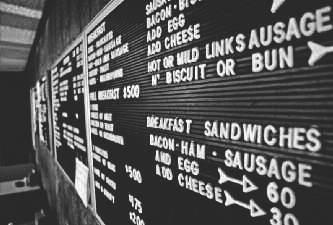
A sandwich menu, United States.
What makes the sandwich so appealing? It is deeply convenient, infinitely variable, cheap and filling. It can be eaten anywhere, with as much or as little ceremony as you like. All you need is a hearty appetite and a single hand the other remains free to read a book, flick the TV remote, hold a phone, pick your nose, gesticulate in conversation or check emails. The sandwich represents liberation from the constraints and rules of formal meals; and for that reason, it has attracted enemies as well as friends. Ever since the fourth Earl of Sandwich first gave his name to a piece of meat inside two slices of bread, some have viewed it as a threat to sociability and to all the nourishing properties of a good, hot meal.
Sandwiches take so many different forms that it is hard to find a definition to fit them all. A sandwich can be a hearty doorstop or a fragile triangle of paper-thin cucumber on slender white bread; it can be a piping-hot Indian toasted sandwich of potato curry and chutney or a fridge-cold prepacked tuna mayo wedge; it can be a Vietnamese vegetarian hoagie of tofu and pickles or a towering American deli sandwich in which the mammoth layer of cured meats and cheese dwarfs the thickness of the bread. In short, the sandwich is a dish in which bread is used as a vehicle for some kind of filling maybe meat, but just as easily almost anything else. The best-selling Victorian cookery writer Mrs Beeton even gives a recipe for a toast sandwich, in which buttered bread is filled with toasted bread good for invalids, apparently.
The OED definition of a sandwich is rather a mouthful:
An article of food for a light meal or snack, composed of two thin slices of bread, usually buttered, with a savoury (originally specifying meat, especially beef or ham) or other filling. Frequently with specifying word prefixed indicating contents, as ham, egg, watercress, peanut butter sandwich or form, as club, Dagwood, Denver, hero, poor boy, submarine sandwich. Occasionally with only one slice of bread, as in open or open-faced sandwich, or with biscuits, sliced buns or cake.
This is both too narrow and too broad. It is too prescriptive to say that a sandwich is composed of two thin slices of bread (what of the chip butty or the bacon bap?). On the other hand, it is too broad to allow in the definition sandwiches made with only one slice of bread. Although a delicious component of many cuisines in Scandinavia, Russia and the Balkans, the open sandwich should never really have been given the name. Structurally, the open sandwich is a contradiction in terms. Open sandwiches are fine things, but not sandwiches.
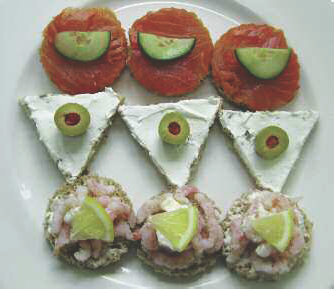
Scandinavian open sandwiches: very delicious but not true sandwiches.
A true sandwich necessarily carries with it the idea of enclosure. It consists of bread surrounding a filling (even when that filling is simply more bread, la Mrs Beeton). The containment may be achieved through various different means whether the soft folding layers of a wrap, the crusty hinged opening of a sliced-open roll or the classic two-slice structure eaten by the fourth Earl of Sandwich in the eighteenth century. But there must be containment a bready top as well as a bottom if the term sandwich is to have a consistent meaning. Otherwise, you could say that plain buttered bread, or the French


